- Joined
- Aug 8, 2008
- Messages
- 6,070
- Points
- 83
Click here for video:
http://www.xinhuanet.com/politics/leaders/2020-05/11/c_1125971265.htm
第一观察 | 鉴往知来——总书记考察文化遗产的特殊深意
2020-05-11 23:08:46 来源: 新华社

关注学习进行时
微信
微博
Qzone
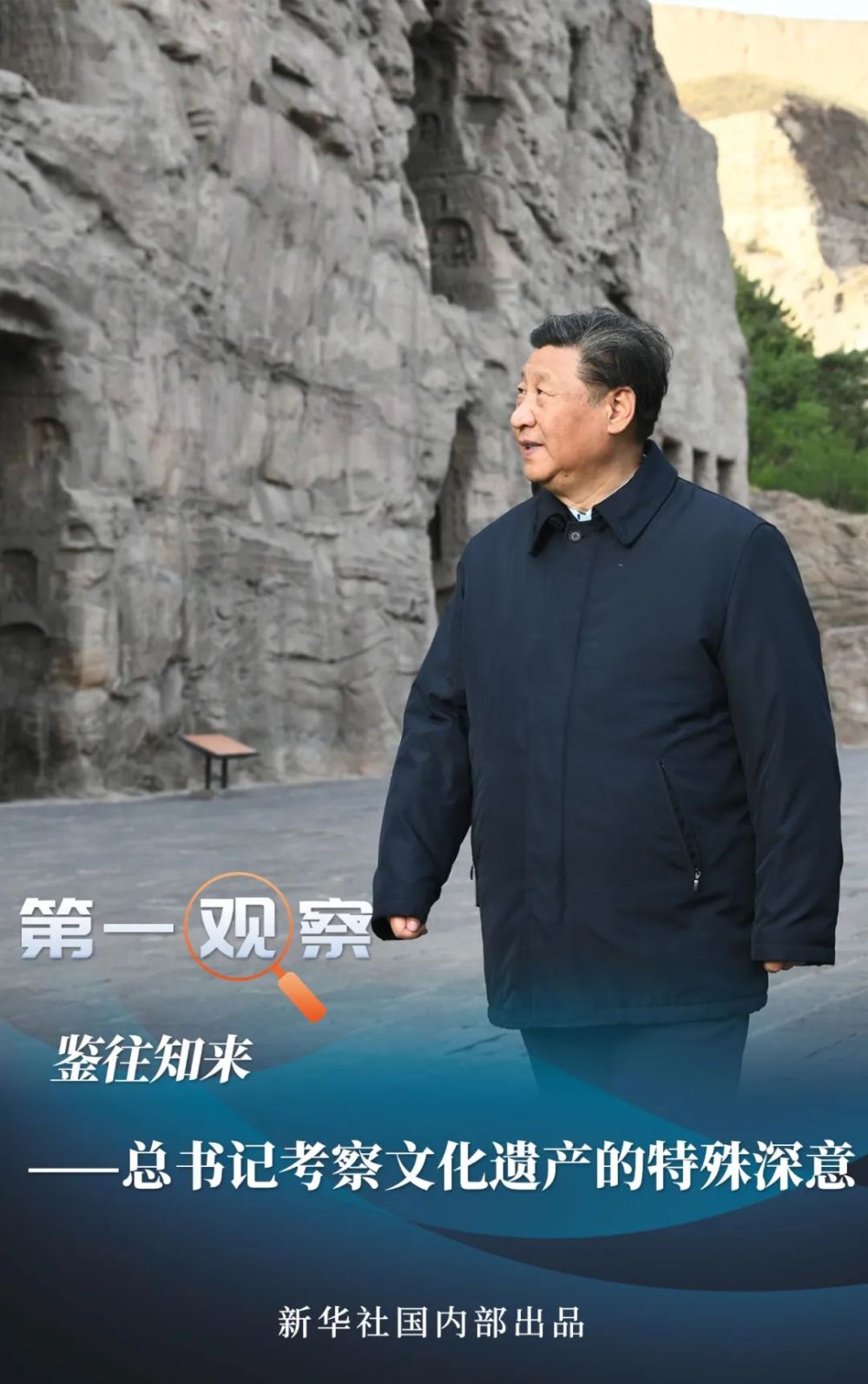
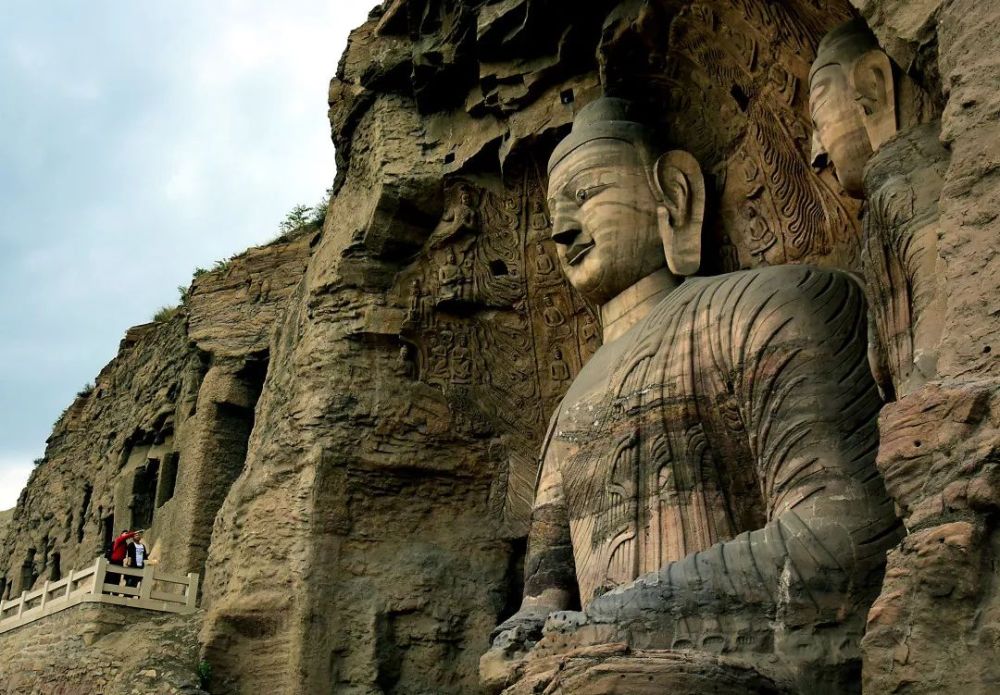 云冈石窟景区第二十窟的释迦坐像(新华社记者王颂 摄)
云冈石窟景区第二十窟的释迦坐像(新华社记者王颂 摄)
不到一年前,2019年8月,习近平总书记在甘肃考察时,专程前往敦煌莫高窟。那一次,他鲜明地提出:“保护好我们的国粹”“讲好敦煌故事”“只有充满自信的文明才能在保持自己特色的同时包容、借鉴、吸收各种文明的优秀成果”。
事实上,习近平总书记在以往考察调研中,多次将考察文化遗产作为一项重要内容。
在西安察看古城墙保护状况,在广州市荔湾区西关历史文化街区永庆坊察看旧城改造、历史文化建筑修缮保护情况,在嘉峪关察看关城并听取长城保护情况介绍……
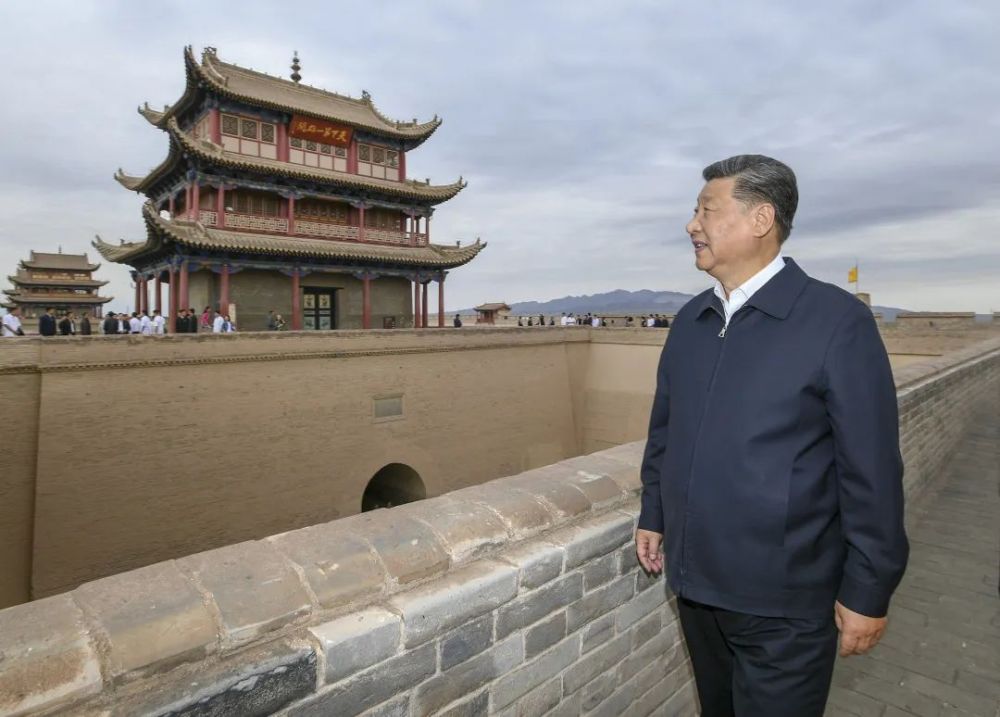
习近平考察嘉峪关关城(新华社记者谢环驰 摄)
2017年7月,鼓浪屿列入《世界遗产名录》后不久,习近平总书记作出重要指示:“申遗是为了更好地保护利用,要总结成功经验,借鉴国际理念,健全长效机制,把老祖宗留下的文化遗产精心守护好,让历史文脉更好地传承下去。”
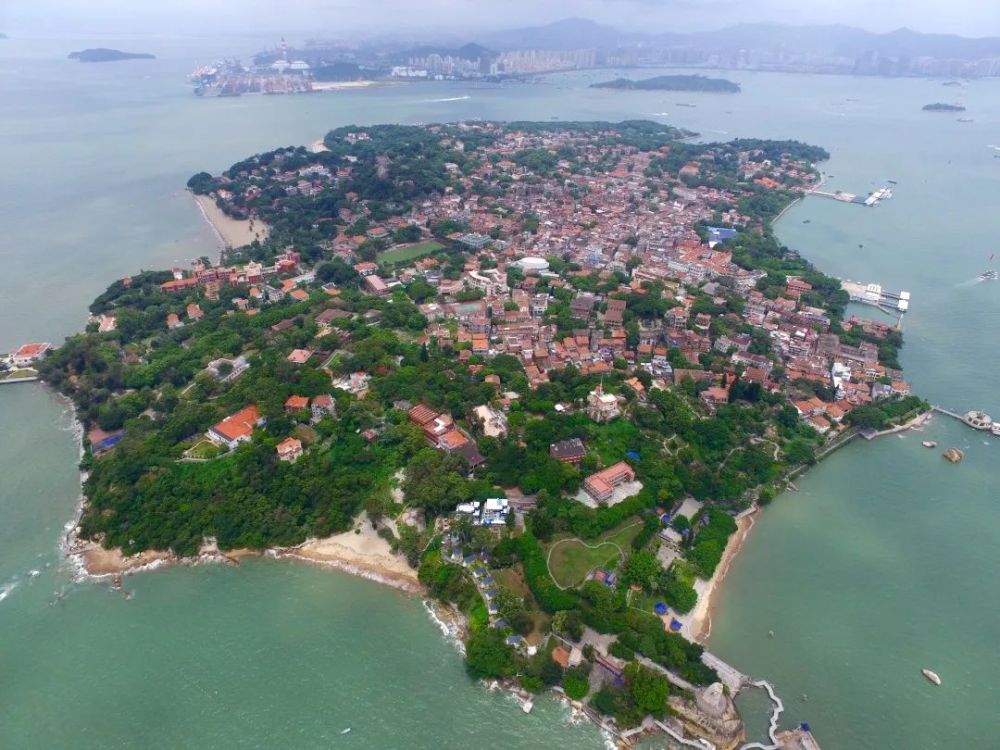
俯瞰鼓浪屿全景 (新华社记者姜克红 摄)
关注文化遗产,体现了习近平独特的时间观。他曾说:“我们对于时间的理解,不是以十年、百年为计,而是以百年、千年为计。”
文化遗产的背后,承载着历史的发展脉络,彰显着文明的无限魅力。
中华文明经历了5000多年的历史变迁,但始终一脉相承,积淀着中华民族最深层的精神追求,代表着中华民族独特的精神标识,为中华民族生生不息、发展壮大提供了丰厚滋养。
拉开历史的望远镜,我们往往可以看到不一样的世界。
越深的积淀,才有越强的自信。当前,国内国际形势风云变幻,各种困难挑战前所未有。在这个特殊时期,习近平总书记考察中华文明的历史遗产,也向外界传递出了增强“四个自信”的明确信号。
这次应对新冠肺炎疫情,我们所展现出的强烈的家国情怀、民为邦本的治国理念、天下一家的人类视野,不都闪现着中华优秀传统文化的基因么?
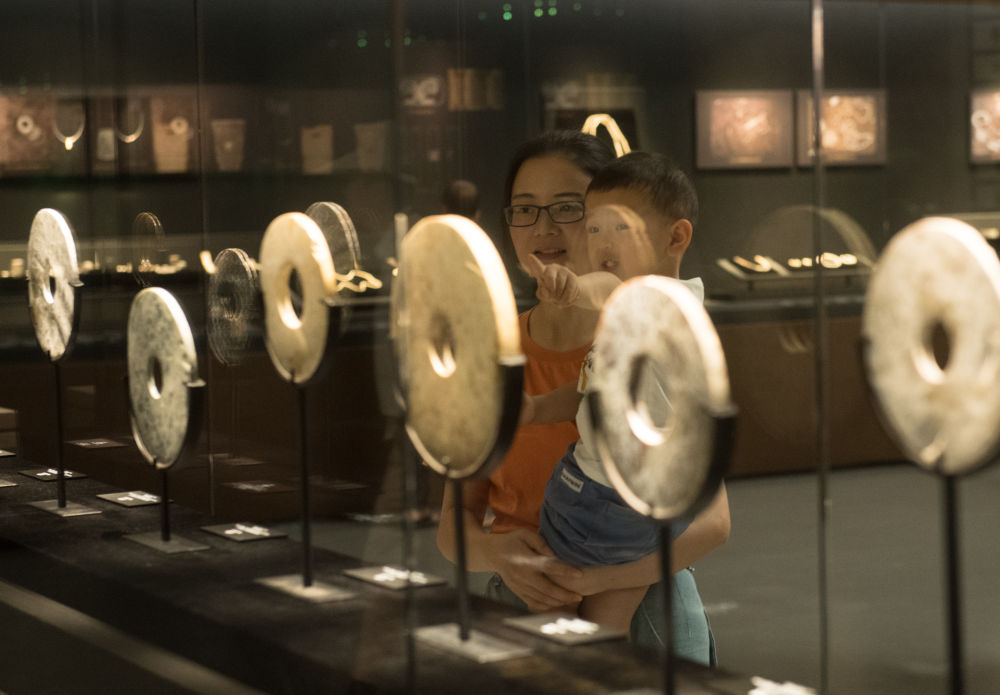 观众在良渚博物院参观(新华社记者翁忻旸 摄)
观众在良渚博物院参观(新华社记者翁忻旸 摄)
习近平总书记这次来到云冈石窟,也还有另一层深意。
从更广阔的地理坐标看,云冈石窟是不同文明交流融汇的结晶。其雕塑既有印度、中西亚艺术元素,也有希腊、罗马建筑造型、装饰纹样、像貌特征等,体现了多种佛教艺术造像风格的融会贯通。
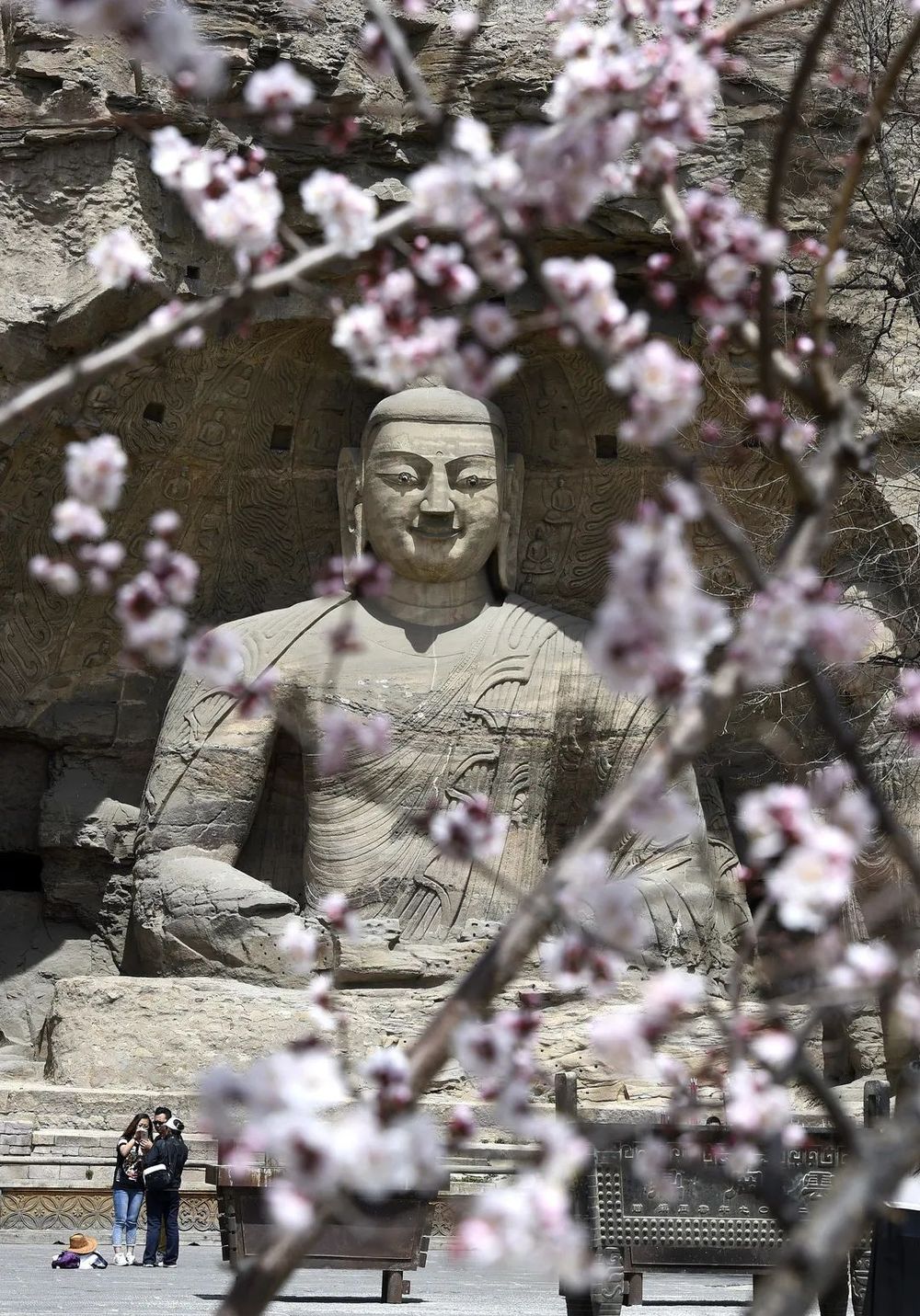
游客在云冈石窟景区参观(新华社记者燕雁 摄)
自古以来,文化便是沟通的桥梁。鉴真东渡、玄奘西行,班超出使西域、郑和七下西洋……中华文明以海纳百川、开放包容的胸襟,不断吸收借鉴域外优秀文明成果。
新时代,文化也是开启“外交”之门的一把钥匙。
在古城西安同印度总理莫迪追溯中印古代文化交流,在雅典卫城博物馆同希腊总统帕夫洛普洛斯鉴往知今话未来,在意大利同孔特总理共话千年古城的保护传承,在法国同马克龙总统谈到论语……习近平总书记以文化为纽带,推动不同文明之间的对话,拉近国与国、人与人之间的距离,让中国的“朋友圈”越来越大。
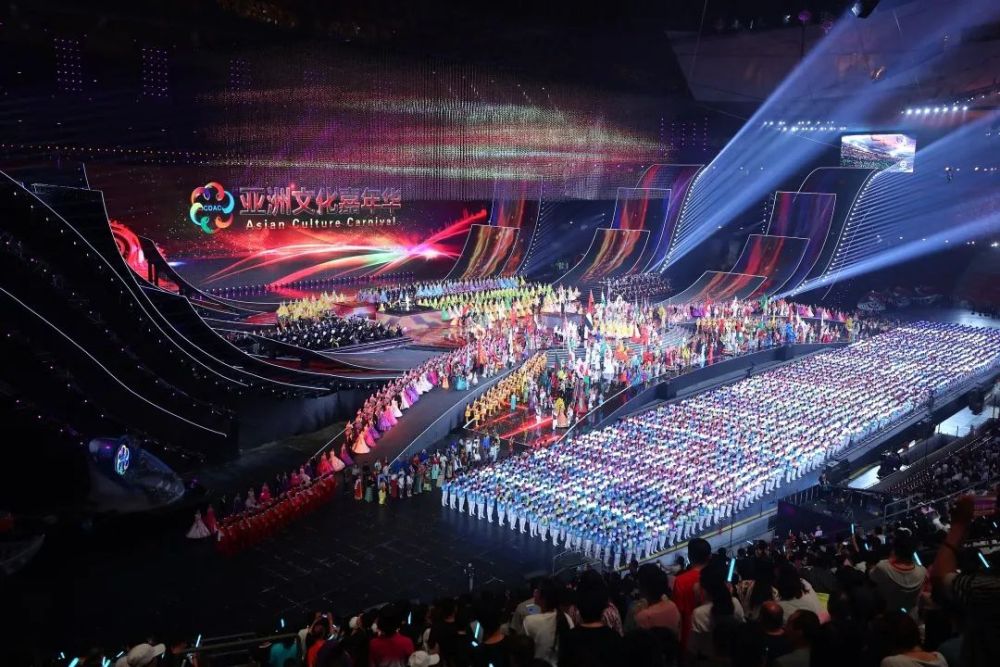 亚洲文化嘉年华在京举行(新华社记者张玉薇 摄)
亚洲文化嘉年华在京举行(新华社记者张玉薇 摄)
“观今宜鉴古,无古不成今。”历史是一面镜子,它照亮现实,也照亮未来。了解历史、尊重历史才能更好把握当下,以史为鉴、与时俱进才能更好走向未来。
策划:霍小光
监制:车玉明、张晓松、鞠鹏
统筹:王敏
主笔:王鹏
视觉/编辑:王秋韵
【纠错】 责任编辑: 徐海知
First Observation | Learning from the past-The special intention of the general secretary to inspect cultural heritage
2020-05-11 23:08:46 Source: Xinhua News Agency
Focus on learning
WeChat
Weibo
Qzone
The first domestic inspection in May, General Secretary Xi Jinping chose Shanxi. On the afternoon of the first day, I came to Yungang Grottoes in Datong to investigate cultural heritage and exchanges.
Yungang Grottoes is located in the southern foot of Wuzhou Mountain in the western suburbs of Datong City, Shanxi Province. It has a history of more than 1,500 years. It is one of the largest cave groups in China. It was included in the "World Heritage List" by UNESCO in 2001.
Sitting Statue of Sakyamuni in the 20th Cave of Yungang Grottoes (Photo by Xinhua News Agency reporter Wang Song)
Less than a year ago, in August 2019, General Secretary Xi Jinping made a special trip to Mogao Grottoes in Dunhuang during his inspection in Gansu. At that time, he clearly stated: "Protect our national quintessence", "Tell the story of Dunhuang" "Only the civilization with full confidence can tolerate, learn from, and absorb the outstanding achievements of various civilizations while maintaining its own characteristics."
In fact, General Secretary Xi Jinping has repeatedly inspected cultural heritage as an important content in previous inspections.
Check the protection status of the ancient city wall in Xi'an, the renovation of the old city and the repair and protection of historical and cultural buildings in Yongqing Square, Xiguan historical and cultural street, Liwan District, Guangzhou City. Check the Guancheng in Jiayuguan and hear about the protection of the Great Wall ...
Xi Jinping inspects Jiayuguan Guancheng (Photo by Xinhua News Agency reporter Xie Huanchi)
In July 2017, shortly after Gulangyu was included in the "World Heritage List", General Secretary Xi Jinping made an important instruction: "The application is for better protection and utilization. It is necessary to sum up successful experience, learn from international concepts, and improve the long-term effective mechanism to put the old The cultural heritage left by the ancestors is carefully guarded so that the historical context can be passed on better. "
Overlooking the panoramic view of Gulangyu Island (Photo by Xinhua News Agency reporter Jiang Kehong)
Focuses on cultural heritage, reflecting Xi Jinping's unique view of time. He once said: "Our understanding of time is not based on ten years or centuries, but on centuries and millennia."
Behind the cultural heritage, it bears the historical development and shows the infinite charm of civilization.
The Chinese civilization has undergone more than 5,000 years of historical changes, but it has always been in the same vein, accumulating the deepest spiritual pursuit of the Chinese nation, representing the unique spiritual identity of the Chinese nation, and providing a rich nourishment for the endless growth and development of the Chinese nation.
Pulling open the telescope of history, we can often see a different world.
The deeper the accumulation, the stronger the confidence. At present, the domestic and international situation is changing, and various difficulties and challenges are unprecedented. During this special period, General Secretary Xi Jinping inspected the historical heritage of Chinese civilization and also sent a clear signal to the outside world to enhance the "four self-confidences."
In response to the New Coronary Pneumonia epidemic, did the strong family sentiment, the people-oriented state-run conception of the nation, and the human vision of the whole world show the genes of Chinese excellent traditional culture?
The audience visited the Liangzhu Museum (photographed by Xinhua News Agency reporter Weng Xinyang)
General Secretary Xi Jinping came to Yungang Grottoes this time, but there is another deep meaning.
From the wider geographical coordinates, Yungang Grottoes are the result of the exchange and integration of different civilizations. Its sculptures have not only Indian and Central Asian art elements, but also Greek and Roman architectural shapes, decorative patterns, and image features, reflecting the integration of various Buddhist art statue styles.
Visitors visit Yungang Grottoes (photo by Yan Yan, Xinhua News Agency)
Since ancient times, culture has been the bridge of communication. Jian Zhen traveled east and Xuan Zang westward, and the class went beyond making the Western Regions, Zheng He go to the west ... The Chinese civilization is open and inclusive, and constantly absorbs and learns from the outstanding achievements of civilizations outside the region.
In the new era, culture is also a key to opening the door of "diplomacy".
In the ancient city of Xi’an, with Indian Prime Minister Modi, trace the ancient cultural exchanges between China and India, in the Acropolis Museum, with the Greek President Pavlopoulos, to learn about the future, and in Italy, talk with Prime Minister Conte about the protection and inheritance of the millennium ancient city. France talked with President Macron about the Analects ... General Secretary Xi Jinping used culture as a link to promote dialogue between different civilizations, narrow the distance between countries and people, and make China's "friendship" more and more Big.
Asian Cultural Carnival held in Beijing (Photo by Xinhua News Agency reporter Zhang Yuwei)
"Looking at the present and appreciating the ancients, no antiquity is impossible." History is a mirror that illuminates the reality and the future. Only by understanding history and respecting history can we better grasp the present moment, and take history as a mirror and advance with the times to better move towards the future.
Planning: Huo Xiaoguang
Producer: Che Yuming, Zhang Xiaosong, Ju Peng
Coordinator: Wang Min
Main pen: Wang Peng
Visual / Editor: Wang Qiuyun
[Error correction] Editor in charge: Xu Haizhi
http://www.xinhuanet.com/politics/leaders/2020-05/11/c_1125971265.htm
第一观察 | 鉴往知来——总书记考察文化遗产的特殊深意
2020-05-11 23:08:46 来源: 新华社

关注学习进行时
微信
微博
Qzone

5月的第一次国内考察,习近平总书记选择山西。第一天下午便来到大同云冈石窟,调研文化传承与交流。
云冈石窟位于山西省大同市西郊的武周山南麓,距今已有1500余年历史,是我国规模最大的石窟群之一,2001年被联合国教科文组织列入《世界遗产名录》。 
不到一年前,2019年8月,习近平总书记在甘肃考察时,专程前往敦煌莫高窟。那一次,他鲜明地提出:“保护好我们的国粹”“讲好敦煌故事”“只有充满自信的文明才能在保持自己特色的同时包容、借鉴、吸收各种文明的优秀成果”。
事实上,习近平总书记在以往考察调研中,多次将考察文化遗产作为一项重要内容。
在西安察看古城墙保护状况,在广州市荔湾区西关历史文化街区永庆坊察看旧城改造、历史文化建筑修缮保护情况,在嘉峪关察看关城并听取长城保护情况介绍……

习近平考察嘉峪关关城(新华社记者谢环驰 摄)
2017年7月,鼓浪屿列入《世界遗产名录》后不久,习近平总书记作出重要指示:“申遗是为了更好地保护利用,要总结成功经验,借鉴国际理念,健全长效机制,把老祖宗留下的文化遗产精心守护好,让历史文脉更好地传承下去。”

俯瞰鼓浪屿全景 (新华社记者姜克红 摄)
关注文化遗产,体现了习近平独特的时间观。他曾说:“我们对于时间的理解,不是以十年、百年为计,而是以百年、千年为计。”
文化遗产的背后,承载着历史的发展脉络,彰显着文明的无限魅力。
中华文明经历了5000多年的历史变迁,但始终一脉相承,积淀着中华民族最深层的精神追求,代表着中华民族独特的精神标识,为中华民族生生不息、发展壮大提供了丰厚滋养。
拉开历史的望远镜,我们往往可以看到不一样的世界。
越深的积淀,才有越强的自信。当前,国内国际形势风云变幻,各种困难挑战前所未有。在这个特殊时期,习近平总书记考察中华文明的历史遗产,也向外界传递出了增强“四个自信”的明确信号。
这次应对新冠肺炎疫情,我们所展现出的强烈的家国情怀、民为邦本的治国理念、天下一家的人类视野,不都闪现着中华优秀传统文化的基因么?

习近平总书记这次来到云冈石窟,也还有另一层深意。
从更广阔的地理坐标看,云冈石窟是不同文明交流融汇的结晶。其雕塑既有印度、中西亚艺术元素,也有希腊、罗马建筑造型、装饰纹样、像貌特征等,体现了多种佛教艺术造像风格的融会贯通。

游客在云冈石窟景区参观(新华社记者燕雁 摄)
自古以来,文化便是沟通的桥梁。鉴真东渡、玄奘西行,班超出使西域、郑和七下西洋……中华文明以海纳百川、开放包容的胸襟,不断吸收借鉴域外优秀文明成果。
新时代,文化也是开启“外交”之门的一把钥匙。
在古城西安同印度总理莫迪追溯中印古代文化交流,在雅典卫城博物馆同希腊总统帕夫洛普洛斯鉴往知今话未来,在意大利同孔特总理共话千年古城的保护传承,在法国同马克龙总统谈到论语……习近平总书记以文化为纽带,推动不同文明之间的对话,拉近国与国、人与人之间的距离,让中国的“朋友圈”越来越大。

“观今宜鉴古,无古不成今。”历史是一面镜子,它照亮现实,也照亮未来。了解历史、尊重历史才能更好把握当下,以史为鉴、与时俱进才能更好走向未来。
策划:霍小光
监制:车玉明、张晓松、鞠鹏
统筹:王敏
主笔:王鹏
视觉/编辑:王秋韵
【纠错】 责任编辑: 徐海知
First Observation | Learning from the past-The special intention of the general secretary to inspect cultural heritage
2020-05-11 23:08:46 Source: Xinhua News Agency
Focus on learning
Qzone
The first domestic inspection in May, General Secretary Xi Jinping chose Shanxi. On the afternoon of the first day, I came to Yungang Grottoes in Datong to investigate cultural heritage and exchanges.
Yungang Grottoes is located in the southern foot of Wuzhou Mountain in the western suburbs of Datong City, Shanxi Province. It has a history of more than 1,500 years. It is one of the largest cave groups in China. It was included in the "World Heritage List" by UNESCO in 2001.
Sitting Statue of Sakyamuni in the 20th Cave of Yungang Grottoes (Photo by Xinhua News Agency reporter Wang Song)
Less than a year ago, in August 2019, General Secretary Xi Jinping made a special trip to Mogao Grottoes in Dunhuang during his inspection in Gansu. At that time, he clearly stated: "Protect our national quintessence", "Tell the story of Dunhuang" "Only the civilization with full confidence can tolerate, learn from, and absorb the outstanding achievements of various civilizations while maintaining its own characteristics."
In fact, General Secretary Xi Jinping has repeatedly inspected cultural heritage as an important content in previous inspections.
Check the protection status of the ancient city wall in Xi'an, the renovation of the old city and the repair and protection of historical and cultural buildings in Yongqing Square, Xiguan historical and cultural street, Liwan District, Guangzhou City. Check the Guancheng in Jiayuguan and hear about the protection of the Great Wall ...
Xi Jinping inspects Jiayuguan Guancheng (Photo by Xinhua News Agency reporter Xie Huanchi)
In July 2017, shortly after Gulangyu was included in the "World Heritage List", General Secretary Xi Jinping made an important instruction: "The application is for better protection and utilization. It is necessary to sum up successful experience, learn from international concepts, and improve the long-term effective mechanism to put the old The cultural heritage left by the ancestors is carefully guarded so that the historical context can be passed on better. "
Overlooking the panoramic view of Gulangyu Island (Photo by Xinhua News Agency reporter Jiang Kehong)
Focuses on cultural heritage, reflecting Xi Jinping's unique view of time. He once said: "Our understanding of time is not based on ten years or centuries, but on centuries and millennia."
Behind the cultural heritage, it bears the historical development and shows the infinite charm of civilization.
The Chinese civilization has undergone more than 5,000 years of historical changes, but it has always been in the same vein, accumulating the deepest spiritual pursuit of the Chinese nation, representing the unique spiritual identity of the Chinese nation, and providing a rich nourishment for the endless growth and development of the Chinese nation.
Pulling open the telescope of history, we can often see a different world.
The deeper the accumulation, the stronger the confidence. At present, the domestic and international situation is changing, and various difficulties and challenges are unprecedented. During this special period, General Secretary Xi Jinping inspected the historical heritage of Chinese civilization and also sent a clear signal to the outside world to enhance the "four self-confidences."
In response to the New Coronary Pneumonia epidemic, did the strong family sentiment, the people-oriented state-run conception of the nation, and the human vision of the whole world show the genes of Chinese excellent traditional culture?
The audience visited the Liangzhu Museum (photographed by Xinhua News Agency reporter Weng Xinyang)
General Secretary Xi Jinping came to Yungang Grottoes this time, but there is another deep meaning.
From the wider geographical coordinates, Yungang Grottoes are the result of the exchange and integration of different civilizations. Its sculptures have not only Indian and Central Asian art elements, but also Greek and Roman architectural shapes, decorative patterns, and image features, reflecting the integration of various Buddhist art statue styles.
Visitors visit Yungang Grottoes (photo by Yan Yan, Xinhua News Agency)
Since ancient times, culture has been the bridge of communication. Jian Zhen traveled east and Xuan Zang westward, and the class went beyond making the Western Regions, Zheng He go to the west ... The Chinese civilization is open and inclusive, and constantly absorbs and learns from the outstanding achievements of civilizations outside the region.
In the new era, culture is also a key to opening the door of "diplomacy".
In the ancient city of Xi’an, with Indian Prime Minister Modi, trace the ancient cultural exchanges between China and India, in the Acropolis Museum, with the Greek President Pavlopoulos, to learn about the future, and in Italy, talk with Prime Minister Conte about the protection and inheritance of the millennium ancient city. France talked with President Macron about the Analects ... General Secretary Xi Jinping used culture as a link to promote dialogue between different civilizations, narrow the distance between countries and people, and make China's "friendship" more and more Big.
Asian Cultural Carnival held in Beijing (Photo by Xinhua News Agency reporter Zhang Yuwei)
"Looking at the present and appreciating the ancients, no antiquity is impossible." History is a mirror that illuminates the reality and the future. Only by understanding history and respecting history can we better grasp the present moment, and take history as a mirror and advance with the times to better move towards the future.
Planning: Huo Xiaoguang
Producer: Che Yuming, Zhang Xiaosong, Ju Peng
Coordinator: Wang Min
Main pen: Wang Peng
Visual / Editor: Wang Qiuyun
[Error correction] Editor in charge: Xu Haizhi
